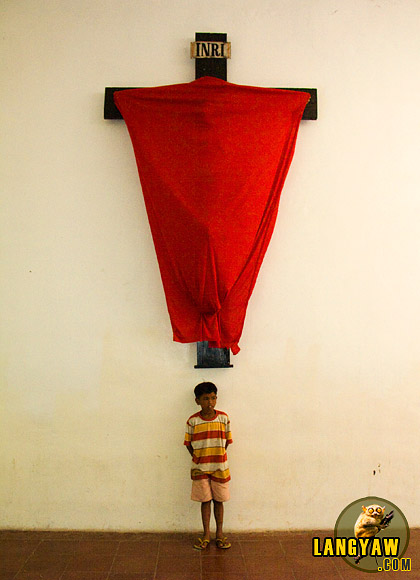

 Speak of Cebu and images of the Sto. Niño , the province’s patron, come to mind. And so does the valiant Lapu-Lapu, sweet mangoes, the famous lechon, guitars and beaches. But it is more than that. Cebu is a special and beautiful place. It is also my home.
Speak of Cebu and images of the Sto. Niño , the province’s patron, come to mind. And so does the valiant Lapu-Lapu, sweet mangoes, the famous lechon, guitars and beaches. But it is more than that. Cebu is a special and beautiful place. It is also my home.
 This is the 9th installment of my Semana Santa series where I feature rituals and traditions observed in certain places during this most solemn week in the Catholic calendar. Click on the image at the right to check the rest of the articles.
This is the 9th installment of my Semana Santa series where I feature rituals and traditions observed in certain places during this most solemn week in the Catholic calendar. Click on the image at the right to check the rest of the articles.
Faith is very much alive in Cebu and during the Semana Santa (Holy Week), a trip down south to the towns of Carcar, Sibonga and Talisay City provides a glimpse of this religious fervor. You won’t see any flagellants or esoteric rites of the dead, nonetheless, it’s still an experience. Way back in 2004, I ventured into this three places for a quick observation.
People observe the visita iglesia to do the via crucis (way of the cross), have confession and contemplate on the significance of the passion and death of Christ in their lives.
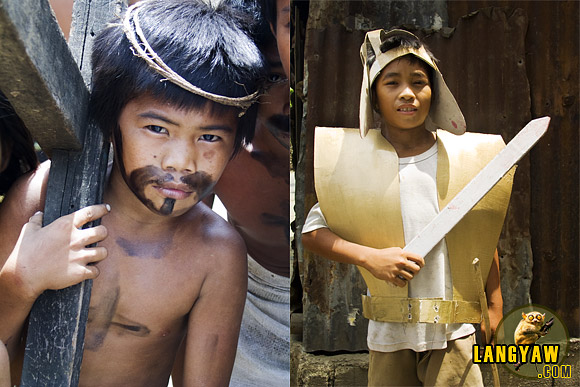
Along the backroads and alleys of Talisay City, children do their own rendition of the passion. Aciete (oil) is daubed on the face and body to simulate beards and cross markings. One carries a cross with a crown of rope or weed stems on their head while another tries to flog and shout at him. At another street, several children are dressed with armors and helmets wielding swords and shields, all made from carton.
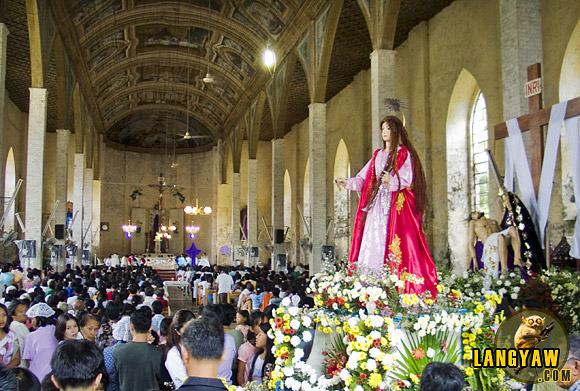
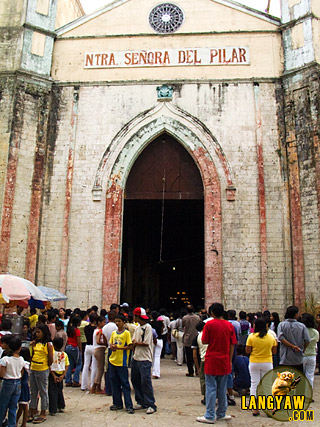
In Sibonga, it’s already past 3 PM and parishioners are already at the church to hear the Good Friday afternoon mass. People spill out into the church grounds. Inside, just near the main portal, several carrozas bearing the processional images are already decked with flowers.
You have the Mater Dolorosa dressed in black with her heart pierced with seven swords. The familiar Pieta is just a few feet infront. Veronica is standing with her imprinted cloth and a host of other images, icons and tableaus.

At the sacristy, it’s also crowded with people while several sacristans are huddling together waiting for the rather long mass to finish and the procession to start. The carroza of the Santo Intierro is conveniently parked at the side entrance.
What I do like about the Good Friday afternoon activities is that, instead of the solemnity that is expected on such occassions, it’s more festive.
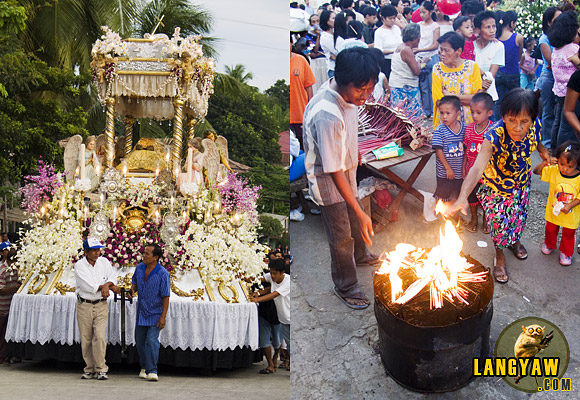
At Carcar Church, the mass is now wrapping up and people are now gathering just outside. Waiting for their favorite carroza to pass and follow. Those from the hinterlands come down during this time and many are lighting candles. Curiously, many hover their hands over the flames while praying and touch it to their body. You can also observe this done by Sto. Niño devotees at the icon’s shrine.
Then from a distance, a gilded carroza comes into view. What a sight to behold! The Santo Intierro’s processional bier is just breathtaking. It’s massive and ornate. Flowers fill it’s sides. Atop it’s canopy is the symbolic lamb biting a cross. Four angels are guarding the dead Christ. Several men are pulling and pushing it up to the church located atop a hill. The image is antique and is taken cared of by one of the town’s illustrious families, a tradition replicated in many other towns and cities in the country. Just like the one in Lucban.
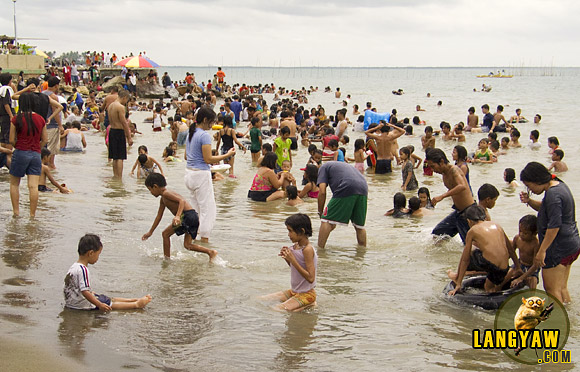
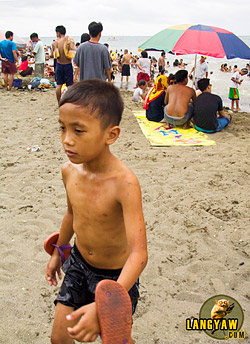
Easter Sunday is so unlike the rest of the Semana Santa. Maunday Thursday and Good Friday are the highlights of the week where passion, contemplation, solemnity as well as age old rituals come into play. These two days are well observed.
On the other hand, Resurrection Sunday is just like any other Sundays of the year except that it’s marked with the salubong (meeting of the processional images of the Virgin Mary and the risen Christ) and joyfully eating of meat again. It is said that Filipinos, even back to the Spanish colonial period, seem to prefer the drama of death than of living.
In Cebu, the notable dawn salubong (sugat in Cebuano) is held in Minglanilla wherein it is noted for the many girl-angels hoisted up during the meeting of the images. It is also known for the number of carabaos slaughtered for the occassion probably to signal the end of the fasting period.
In Talisay City, expect the resorts to be full of people. These really get crowded and noisy as many are belting their favorite songs with the karaoke. Cottages are full that some families gather at the sands with a big umbrella and towels. But what I do like about these time at the beach are the grilling, lots of food and drinks and a good time out for the entire family.
Folks used to meditate and reflect during the Holy Week, now its just several days of beach fun
well, times have really changed. pero one good thing in going to the provinces is that you can still experience traditions.
I really like the first picture !
Hmmm… alas it seems a lot of those old traditions are fast disappearing…
children take a big role in some of the reenactments. i thought they only take part in flores de mayo. something unique maybe in that area.
it is indeed a common tradition to go to the beach during easter. specially the kids. they look up to those times.
hala! grabe ang crowd, dili masabot. ana jud ka-crowded? walay laing beach dira dapita? grabe…
The Calandras from Cebu are among biggest
and majestic in the country. The grandest of
all was the old calandra from Cebu Cathedral.
Thanx for the info 🙂